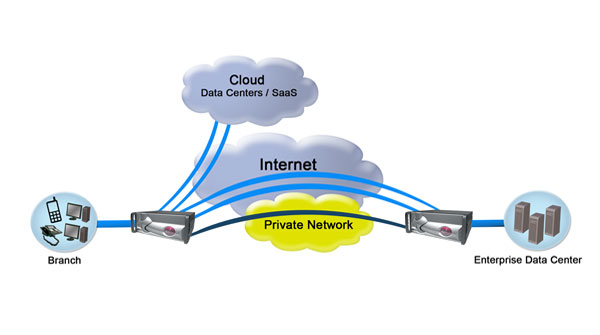SD-WAN is now SD-WAN TM
SD-WAN is evolving to SD-WAN TM
Many SD-WAN solutions promise adopters a software/hardware solution that will ultimately solve their traffic routing issues and improve network performance. But research has shown that this is not the case. Over 60% of SD-WAN installs are retooled or worse, uninstalled, simply because they just do not meet the needs of today’s modern wide area network.
Let’s be honest, SD-WAN has got a rap, not necessarily “bad” but perhaps has been touted, incorrectly, as a panacea to solve a multitude of issues faced by today’s WAN administrators.
So why the confusion and lack of understanding? Perhaps it is marketing hype, where vendors in this market claim to have solutions that meet most customer’s needs, only to find far more is required than what is advertised. Perhaps customers are too quick to jump on the bandwagon, with administrators installing “SD-WAN” simply to appease management that they now have the latest and greatest, or to try something and see if and how it works.
SD-WAN (Software-Defined WAN) is cool, and can be a very effective, cost saving solution for almost ANY WAN of any size or configuration. After research with well over 100 SD-WAN users, both large and small, the clear differentiator in this discussion is undoubtedly, the “S”. The Software. It is well known that the hardware is no longer the focus for a successful, high speed WAN, it is how the software manages the traffic.
It is all about network traffic management
Perhaps SD-WAN should be changed to SD-WAN-TM – WAN Traffic Management, because at the end of the day, it really is about traffic management, knowing what the traffic type is, where it originates, the destination and of course, how it gets there.
Modern WANs are becoming more and more complex, especially with the adoption of cloud and hybrid cloud services and solutions, better bandwidth offerings, faster cell networks (5G is blisteringly quick) and of course, the need to access information and data from anywhere at any time, using a multitude of devices.
Users are driving the change. Instant access is imperative, demanded, and critical to the success of today’s fast paced on line business to consumer economy. Businesses are adapting to this change requiring more connectivity to aligned organizations, such as healthcare institutions connecting to insurance companies, financial institutions connecting to regulatory bodies, mortgage and insurance companies, and large on line retailers managing inventory, deliveries, and billing. We are becoming more and more connected, and with that brings the number 1 fear for any network administrator, the security of their data.
Security is undoubtedly the one issue keeping the WAN administrator awake at night. With the massive increase in network traffic on multiple and different link types, especially broadband, from multiple devices, the question must now be, how do you manage this traffic effectively, efficiently and most importantly, easily?
In order to have a reliable, secure and effective WAN, it is imperative that administrators take control of traffic across the network. Knowing how traffic is being routed and most importantly, being able to control it, is without question the most important factor affecting the modern WAN. Managing this traffic across multiple links using multiple formats is key. This is the promise of SD-WAN.
5 Necessities for a cost effective SD-WAN solution
To get the best “S” for your SD-WAN needs, there are a few easy steps any business should take. Here are 5 key questions you MUST ask your SD-WAN vendor:
- Will your SD-WAN solution work with existing routers and network protocols?
- Will your SD-WAN solution work with multiple links in one device, even if those links are different types and speeds, including copper, fiber, 3G,4G,5G LTE, broadband and satellite?
- Will your Software-Defined WAN (SD-WAN) solution securely load balance and failover BOTH inbound and outbound traffic, even if this is VoIP or Video resulting in zero dropped calls?
- Does your SD-WAN solution allow setting of thresholds for any traffic type, including application specific, protocol specific, line specific, or interface specific?
- Will your SD-WAN solution be capable of managing traffic securely to and from any cloud or hybrid cloud application or service and can you do this all from a single screen view of the entire network?
If you answered yes to ALL of these questions, you have a very good SD-WAN solution, or even better, best of breed WAN traffic management.
Traffic management is already the most important factor affecting networks today. It will become even more important and critical as more and more devices connect. Multiple research predicts up to 50 Billion devices connected to the Internet by 2025.
To be sure you have the right “S” to manage your traffic, check to see how your network is designed, the links you have in place, the firewalls, routers, the current traffic management system, and ask yourself what is possible and what will be required to ensure reliability, security, redundancy, efficiency and, perhaps often overlooked, how simple will it be to configure and manage?
FatPipe Networks have been designing and developing best of breed SD-WAN solutions for over 17 years, are the holder of 12 seminal patents and are FIPS 140-2 certified. With the capability of managing up to 16 different links, with multiple speeds, sub second failover, stateful firewall, inbound redundancy and security, best WAN Optimization options, and scalable up to 40Gb, FatPipe can meet all of the customer SD-WAN requirements. FatPipe’s traffic management is second to none. Offering both capex and managed service solutions, FatPipe is unique in the market. Can you afford not to check out FatPipe’s WAN traffic management capabilities?
Call FatPipe today at 801-683-5656 x 1224. www.fatpipeinc.com






